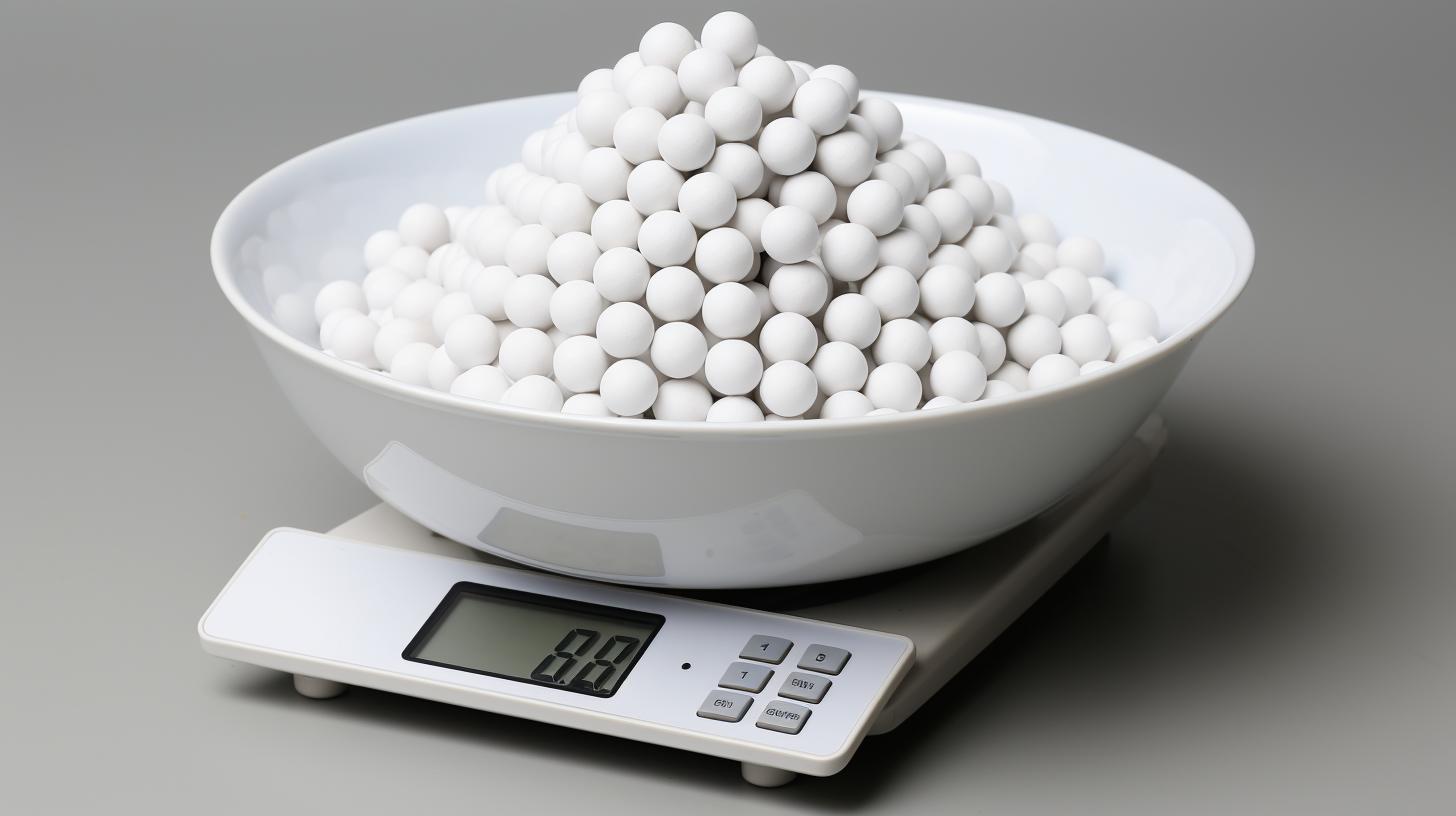
How much do golf balls weigh? Understanding the weight of a golf ball is crucial for players looking to optimize their performance on the course. From the history of golf ball weight to the impact it has on distance, accuracy, and feel, there are many factors to consider when it comes to this essential piece of equipment. In this article, we will explore the significance of understanding golf ball weight and its impact on the game.
The weight of a golf ball has evolved over time, influenced by advancements in materials, construction, and technology. Understanding the history of golf ball weight can provide valuable insight into the development of this important aspect of the game. Additionally, knowing the standard weight of a golf ball and how it compares to other sports balls can offer perspective on its significance in relation to performance and play.
Factors such as material, construction, and technology can all affect the weight of a golf ball. These elements play a crucial role in determining how a ball will perform on the course, impacting everything from distance and accuracy to how it feels when struck.
As such, understanding these factors is essential for players looking to choose the right weight for their game. In the following sections, we will delve into these considerations and their implications for players at every skill level.
The History of Golf Ball Weight
The weight of golf balls has undergone significant changes throughout history, reflecting advancements in technology and materials. In the early days of golf, the weight of a golf ball was not standardized, leading to inconsistencies in performance and play. Golf balls were originally made from hardwoods such as beech or boxroot, which resulted in varying weights and flight characteristics. As the game of golf continued to evolve, so did the weight of the golf ball.
In the mid-19th century, the introduction of the gutta-percha ball revolutionized the sport. This rubber-like material allowed for more consistent production and weight control. The standard weight of a gutta-percha ball was around 1.62 ounces (45.9 grams), marking a significant step forward in golf ball design. However, it wasn’t until the early 20th century that a standard weight for golf balls was established by governing bodies such as the USGA and R&A.
Today, modern golf balls are typically designed to weigh no more than 1.62 ounces (45.9 grams) and have specific size and dimple pattern requirements to ensure consistency in performance. The evolution of golf ball weight reflects the ongoing pursuit of precision and excellence in the game of golf.
| Golf Ball | Weight (Ounces) |
|---|---|
| Early Wood Balls | Varied |
| Gutta-Percha Ball | Around 1.62 ounces (45.9 grams) |
| Modern Golf Balls | No more than 1.62 ounces (45.9 grams) |
The Standard Weight of a Golf Ball
Evolution of Golf Ball Weight
The regulation weight of golf balls has evolved over time. In the earlier days of golf, balls were made from materials like wood and feathers, which resulted in a wide range of weights and inconsistent performance. However, with advancements in technology and manufacturing processes, modern golf balls are now designed to meet strict weight standards for uniformity and accuracy.
Manufacturing Process
Manufacturers use precise machinery and quality control measures to ensure that each golf ball produced meets the standard weight criteria. The composition of materials and construction techniques are carefully monitored to achieve the desired weight while also meeting other performance requirements such as distance, spin, and durability.
Overall, understanding the standard weight of a golf ball is essential for both players and manufacturers to maintain fairness and integrity in the game. Adhering to these regulations ensures that players can compete on a level playing field, knowing that the equipment they use meets consistent standards of performance.
How Much Do Golf Balls Weigh in Comparison to Other Sports Balls
When it comes to sports, the weight of equipment can have a significant impact on performance. In the world of golf, the weight of a golf ball is a crucial factor that can affect distance, accuracy, and overall feel during play. To better understand the significance of golf ball weight, it’s important to compare it to the weights of other sports balls commonly used in athletic activities.
Comparing Golf Balls to Tennis Balls
Tennis balls are often similar in size to golf balls but are significantly lighter. A standard tennis ball typically weighs between 56 and 59.4 grams, while a regulation golf ball weighs around 45.93 grams. This difference in weight affects how each ball travels through the air and bounces off surfaces, ultimately impacting their use in their respective sports.
Comparing Golf Balls to Baseballs
Baseballs and golf balls also differ in weight and size. While baseballs are slightly larger than golf balls, they are much heavier, weighing around 145 grams on average. This stark contrast in weight reflects the nature of each sport – where hitting power and velocity are key factors for baseball players while precision and control are paramount for golfers.
Comparing Golf Balls to Soccer Balls
Soccer balls are notably larger and heavier compared to golf balls. The standard weight of a soccer ball ranges from 410 to 450 grams for official matches. This substantial difference in weight showcases how different sports have distinct requirements when it comes to their respective playing equipment.
Understanding how much golf balls weigh compared to other sports balls provides valuable insight into the unique characteristics and requirements of each sport. By recognizing these differences, athletes can better appreciate the role that equipment weight plays in their performance and adjust their game accordingly.
Factors That Can Affect the Weight of a Golf Ball
One of the most common questions in the world of golf is, “How much do golf balls weigh?” The weight of a golf ball is a fundamental aspect of the game, and it can significantly impact a player’s performance on the course. Several factors can affect the weight of a golf ball, including the materials used in its construction, the manufacturing process, and technological advancements in golf ball design.
The weight of a standard golf ball is approximately 45.93 grams or 1.62 ounces. However, variations in weight can occur due to differences in materials and construction methods. For example, some golf balls are designed with heavier cores to achieve specific performance characteristics, while others may have lighter overall weights to enhance distance or feel.
The material used in the construction of a golf ball plays a significant role in determining its weight. Traditional golf balls are made from rubber and synthetic materials, but modern advancements have introduced new materials such as urethane and thermoplastic resins.
These materials offer different properties that can affect the weight and performance of the golf ball. Additionally, changes in construction methods, such as multiple-piece designs or dimple patterns, can also impact the overall weight distribution and feel of the ball.
It is crucial for players to consider these factors when selecting a golf ball that best suits their playing style and skill level. Understanding how material, construction, and technology can affect the weight of a golf ball allows players to make informed decisions about their equipment and optimize their performance on the course.
| Aspect | Impact |
|---|---|
| Material | Affects weight distribution and overall feel |
| Construction | Can impact overall weight and performance characteristics |
| Technology | Innovations influence weight distribution and flight trajectory |
The Impact of Golf Ball Weight on Performance
Golf ball weight plays a crucial role in the overall performance of a player on the course. Understanding how the weight of a golf ball can affect distance, accuracy, and feel is essential for any golfer looking to improve their game. In this section, we will delve into the impact of golf ball weight on performance and explore how it influences key aspects of play.
One factor that affects how much do golf balls weigh is material. The different materials used in manufacturing golf balls can result in varying weights, which ultimately impact performance. For example, traditional golf balls are made with rubber and resin layers, while modern designs incorporate advanced materials such as urethane or Surlyn. These material choices can influence the overall weight distribution of the ball and affect its flight and feel when struck.
Another aspect to consider is construction. The design and construction of a golf ball can significantly impact its weight and subsequently its performance on the course. From two-piece to multi-layered constructions, each type offers different characteristics that can influence distance, accuracy, and feel. Additionally, advancements in technology have allowed for greater control over weight distribution within the core and cover of a golf ball, further impacting its performance.
Understanding how much do golf balls weigh in comparison to other sports balls is also important for players looking to optimize their game. A comparative analysis reveals that the average weight of a golf ball (1.62 ounces or 45.93 grams) falls within a range comparable to other sports balls such as tennis balls (2 ounces or 56 grams) and baseballs (5-5.25 ounces or 142-149 grams).
This insight demonstrates that even small variations in weight among sports balls can have a significant impact on their performance and behavior when put into play.
The Importance of Choosing the Right Weight for Your Game
Golf ball weight is a crucial factor to consider when aiming for the best fit for your playing style and skill level. The weight of a golf ball determines its performance, including distance, accuracy, and feel as it interacts with the club and the golfer‘s swing. This section will explore why it is essential to choose the right weight for your game and how it can impact your overall performance on the course.
There are several factors that come into play when determining the best golf ball weight for your game. The materials used in the construction of the ball, such as rubber, plastic, or resin, can affect its overall weight. Additionally, advancements in technology have allowed for variations in weight distribution within the ball itself, impacting its aerodynamics and trajectory upon contact with the club. Understanding these intricacies is crucial in finding the right fit for your playing style.
When selecting a golf ball, it is important to consider your skill level and individual playing style. For example, beginners or those with slower swing speeds may benefit from using lighter golf balls that can be easily launched into the air for greater distance. On the other hand, experienced golfers with faster swing speeds may prefer heavier balls that provide better control and precision in their shots.
To help you further understand this topic here are some key points about why choosing the right ball is so important:
- The weight of a golf ball directly impacts its performance
- Factors such as material and technology affect a ball’s weight
- Individual skill level and playing style should be considered when choosing a golf ball
Conclusion
In conclusion, understanding the weight of golf balls is crucial for any player looking to improve their game. The history of golf ball weight has shown how it evolved over time, impacting the game in various ways. The standard weight of a golf ball is important to adhere to, as it ensures fair play and consistency across the sport. Additionally, comparing the weight of golf balls to other sports balls provides valuable insight into their unique characteristics and performance.
Factors such as material, construction, and technology can all affect the weight of a golf ball, ultimately influencing its performance on the course. It’s essential for players to consider these factors when choosing the right ball for their game.
The impact of golf ball weight on performance cannot be understated; it can affect distance, accuracy, and overall feel during play. Therefore, finding the best fit for your playing style and skill level can make a significant difference in your game.






